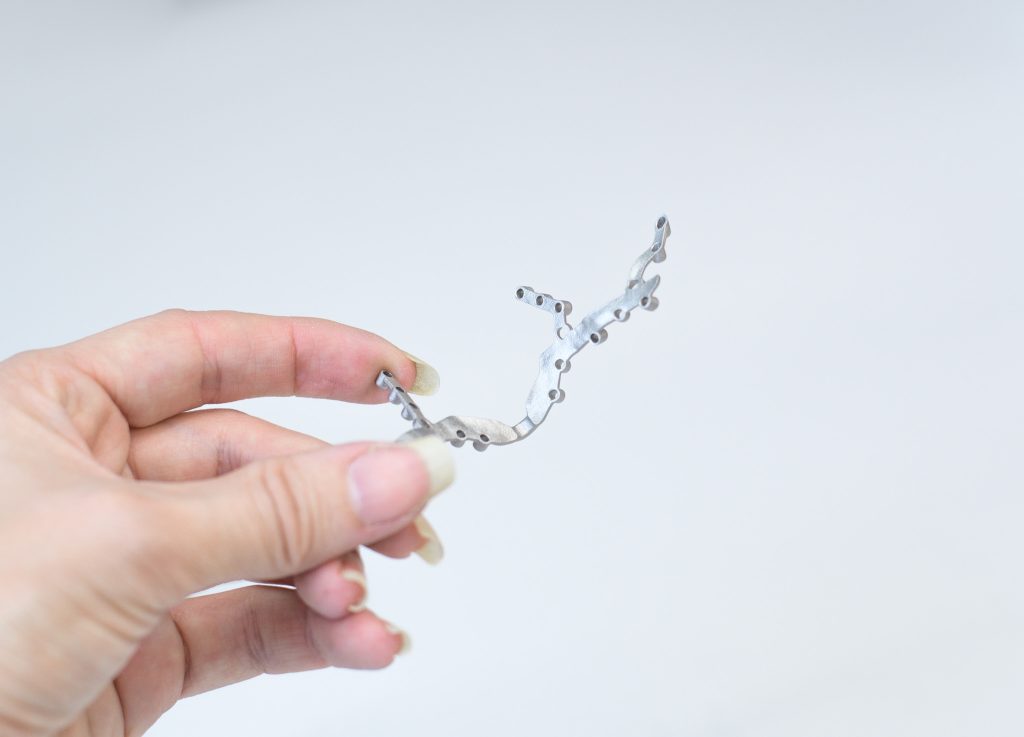Individual parts flexibly – 3D printing enables more than a mold
3D printing is the fastest and most cost-effective manufacturing method when the parts are completely unique and challenging to produce with other methods. The high level of requirements for the individual details of the parts and the exact characteristics of the complex product make other manufacturing methods too slow, expensive or simply impossible.
The 3D printing of an individual part enables the part to be designed exactly to meet its purpose – without the restrictions imposed by the production method on the shape, details or material of the part.
This article is part of our blog series where we focus one by one on the different reasons to choose 3D printing over traditional manufacturing methods. Now we take a look at the industries that use 3D printing to manufacture individual parts.
Some parts would not be possible to manufacture without 3D printing
3D printing enables the production of parts that are impossible to implement with traditional production methods. This is especially important when individual and very complex parts are needed.
Manufacturing individual parts is expensive with most of the traditional manufacturing methods. For example, with molding, a lot of time is first spent on making the mold: if the intention is to produce only one completely unique part, the manufacturing process is extremely long and expensive compared to the purpose. The manufacturers’ minimum order quantities also often prevent the cost-effective production of individual parts.
3D printing of individual parts enables increasingly innovative and ambitious product development. 3D printing enables more versatile shapes and structures than traditional manufacturing methods, such as molding or machining. 3D printing can be used to produce, for example, cell-like structures that are impossible to produce with other methods.
In the product development process, individual parts can be 3D printed as needed. When testing the product to be developed, it helps that even small changes can be implemented quickly and cost-effectively with 3D printing. Flexible production of individual parts enables faster product development and bringing the product to market.

The design and production of a unique part with 3D printing is fast and flexible
The production process of an individual part using 3D printing requires precise planning. With the help of a professional, the time from the start of planning to the delivery of the product is not long.
When the need for an individual part comes up, the options are to design the part yourself or take advantage of the help and advice of professionals from Materflow, for example.
The design of complex shapes requires both the customer’s professional view of what the requirements are for the part, and the know-how of a 3D printing expert to plan the appropriate production process and material choices.
When it comes to the development of a new product, a part can be modified several times before it comes out just right. Between test rounds, the 3D model is stored digitally with the printing partner who can always make the necessary changes to the model before the next run.
3D printing enables individual manufacturing of parts and devices in the medical field
Parts that are completely individual are needed in many different fields. The field where the demand for individual parts is particularly high is the medical field, i.e. healthcare products and technology. These individual parts and devices are made for each patient to match, for example, the shape of the skull – the geometry of the part can in this case be very complex. When it comes to the unique human skeleton, it is not possible to use generic “spare parts” that fit everyone.
A representative of our client in the healthcare sector explains why they use 3D printing:
“3D printing is the only effective manufacturing method that can be used to produce patient-specific drill guides, because their geometric shapes cannot be produced by e.g. machining due to their shape limitation. It is especially important that the guide fits exactly to the individual shape of the patient’s bones. 3D printing enables this level of precision in design and production.”
Dental research has shown that 3D printed dental crowns fit better and last longer than those produced by traditional methods. 3D printing enables even more precise individualization of crowns.
Materflow 3D prints unique dental prosthetics using cobalt chrome. Read more about our services for the dental field.


